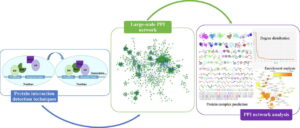Computational identification of protein complexes from network interactions: Present state, challenges, and the way forward.

https://doi.org/10.1016/j.csbj.2022.05.049
Abstract Physically interacting proteins form macromolecule complexes that drive diverse cellular processes. Advances in experimental techniques that capture interactions between proteins provide us with protein-protein interaction (PPI) networks from several model organisms. These datasets have enabled the prediction and other computational analyses of protein complexes. Here we provide a systematic review of the state-of-the-art algorithms for protein complex prediction from PPI networks proposed in the past two decades. The existing approaches that solve this problem are categorized into three groups, including: cluster-quality-based, node affinity-based, and network embedding-based approaches, and we compare and contrast the advantages and disadvantages. We further include a comparative analysis by computing the performance of eighteen methods based on twelve well-established performance measures on four widely used benchmark protein-protein interaction networks. Finally, the limitations and drawbacks of both, current data and approaches, along with the potential solutions in this field are discussed, with emphasis on the points that pave the way for future research efforts in this field.
Original Publication (Open Access)
Computational identification of protein complexes from network interactions: Present state, challenges, and the way forward.
S Omranian, Z Nikoloski, DG Grimm
Computational and Structural Biotechnology Journal, 2022 (https://doi.org/10.1016/j.csbj.2022.05.049)
